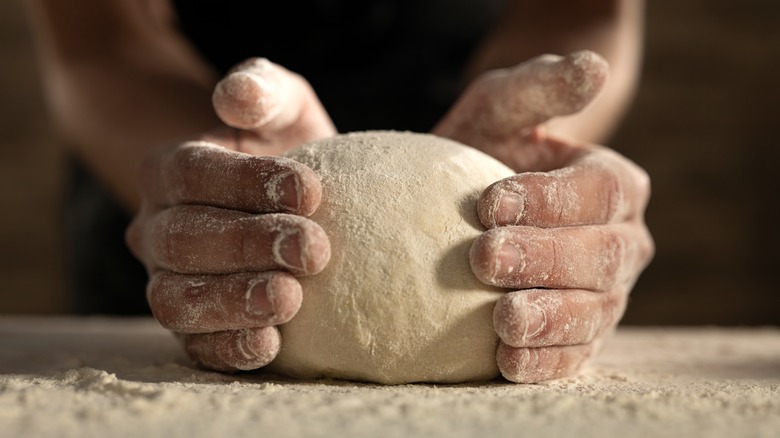The Flour Mistake That Will Leave You With Dense Pizza Dough
Pizza is one of those foods that anyone can make, no matter how experienced (or inexperienced) of a cook you are. In its most basic form, all you need is dough, sauce, and cheese to recreate a pie from one of the most popular carryout pizza chains like Papa John's or Domino's. Of course, if you prefer something a little fancier, you can also add toppings or elevate the staple ingredients. One way to do the latter? Making homemade pizza dough.
You can find tons of recipes for pizza dough online along with plenty of hacks for better dough. Some people recommend adding garlic powder for extra zest, while others suggest honey (yes, really!) for a sweet and savory effect. Regardless of the variation you choose, however, there's one core ingredient that's a common denominator: flour. And it turns out there's one big faux pas many people make with their flour when making their own pizza dough. Here's what to avoid the next time homemade pizza is on the menu.
Be careful with how much flour you use
When it comes to choosing the right flour for your pizza dough, it turns out that quantity is just as important as quality. In a nutshell: less is sometimes more. The Pizza Heaven explains that too much flour results in dense dough because of the low hydration levels in the mixture. With more water in the dough, it becomes easier to stretch and maneuver, and adding less flour will help with lowering the hydration level. They add that the amount of water in the recipe should be about 70% of the amount of flour for the best dough.
If you've accidentally mixed too much flour into your dough, fear not. There's an easy fix. The blogger at Loafy Bread says to just add more liquid or fat to balance out the extra flour, whether that's kneading in more water, more eggs, or more butter or oil (depending on your recipe). Add a little bit at a time until you get your desired consistency.

